-
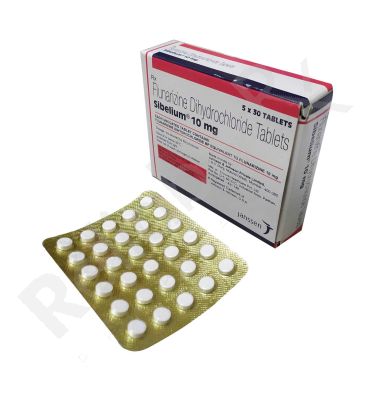 Sibelium 10mgUS$ 0.25 - US$ 0.35
Sibelium 10mgUS$ 0.25 - US$ 0.35US$ 0.25
Generic For : SibeliumActive Ingredient : Flunarizine30 Tablet/sUS$ 10.40 -
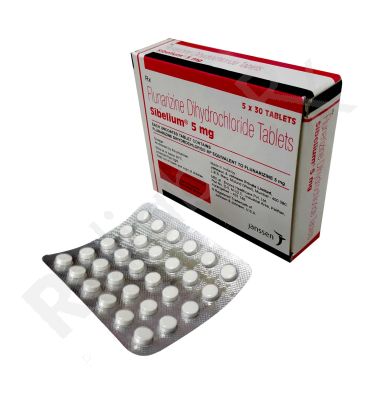 Sibelium 5mgUS$ 0.20 - US$ 0.22
Sibelium 5mgUS$ 0.20 - US$ 0.22US$ 0.20
Generic For : SibeliumActive Ingredient : Flunarizine30 Tablet/sUS$ 6.50 -
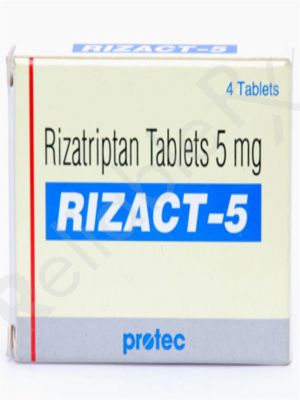 Rizact 5 mgUS$ 1.38 - US$ 1.62
Rizact 5 mgUS$ 1.38 - US$ 1.62US$ 1.38
Generic For : MaxaltActive Ingredient : Rizatriptan32 Tablet/sUS$ 51.97 -
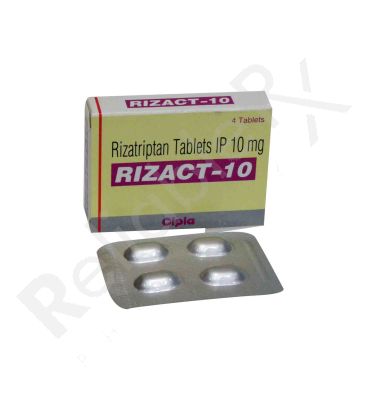 Rizact 10 mgUS$ 2.44
Rizact 10 mgUS$ 2.44US$ 2.44
US$ 2.44
Generic For : MaxaltActive Ingredient : Rizatriptan32 Tablet/sUS$ 77.94 US$ 97.45 -
 Suminat 50mgUS$ 2.50 - US$ 3.10
Suminat 50mgUS$ 2.50 - US$ 3.10US$ 2.50
Generic For : ImitrexActive Ingredient : Sumatriptan10 Tablet/sUS$ 31.00 -
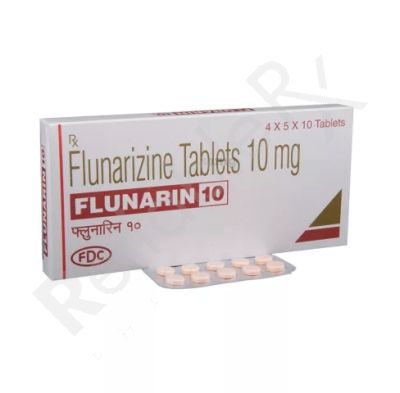
-
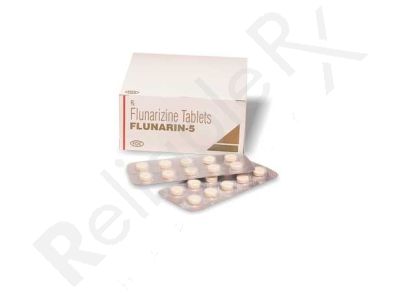
-

-

Antimigraine drugs
About 28 million Americans suffer from a migraine. Migraine pain is unbearable and disabling for a sufferer. The word 'a migraine' is derived from a Greek word that means half head. It is a painful headache that has a propensity for recurrence and initiates from one side of the area. It commonly comes with warning signs such as tingling in the arms and legs, nausea, vomiting, and sensitivity to light. The person feels significant pain, and its frequency tends to progress with time.
Some people encounter warning symptoms known as ‘Aura’ before an actual headache begins. The disease is most commonly experienced by both men and women between the ages of 25 and 39.
A migraine is of two types:
A migraine without aura (previously called common migraine): almost 80 percent of disease sufferers have this type of a migraine
A classic migraine with aura: It arises 15 minutes before the attack and is accompanied by symptoms such as numbness in the tongue, hand, or side of the face. Up to one-third of people with migraine headaches perceive an aura: a transient visual, sensory, language, or motor disturbance that signals that a headache will soon occur.
Causes of a migraine:
There are various triggering factors that cause a headache such as:
• Allergic reactions
• Bright light and loud noise
• Physical or emotional stress
• Fluctuations in estrogen levels due to contraceptive use
• Menopause or menstrual changes
Aged cheeses, processed and salty foods, skipping meals or fasting can stimulate the condition. Changes in sleep patterns, physical or emotional stress, excessive alcohol intake, and exposure to smoke are common causes of disease.
Signs and symptoms:
Pain can vary from person to person. It usually progresses from four stages such as prodrome, aura, headache, and post-drone. It is not necessary that everyone will experience all the stages:
• Early symptom: One or two days before an attack, you may notice subtle changes that signify an oncoming attack such as constipation, depression, food cravings and hyperactivity
• Aura: symptoms start for several minutes and lasts for 20 to 60 minutes before the onset of a headache such as visual phenomena, vision loss, tingling in arms and needles and speech or language problems
• Attack: it lasts from 4 to 72 hours, but the frequency varies from person to person. Pain on one side of the brain, blurred vision, nausea, vomiting, and fainting are usually experienced by the patient
• Post attack symptom: after the attack, a patient feels tired, fatigue with decreased energy levels. Some people encounter dizziness also.
Adverse effects of the problem:
There are some complications that may arise during a migraine attack such as:
• Chronic migraine pain
• Persistent aura without infarction
• Migrainous infarction
• Medication overuse problems
• Abdominal problems
Preventive measures:
To prevent a migraine attack, you can do self-help preventive measurements, such as:
• avoid trigger food and environment factors that might have provoked a migraine outburst
• Avoid caffeine or any other caffeinated drink
• Limit alcohol intake
• Manage stress with yoga /exercise
• Avoid taking hormonal drugs
• Maintain a regular sleeping habit
• Keep a headache diary
• Wear protective glasses to avoid heavy light exposure
Common antimigraine medicines:
A few common antimigraine medicines used to kill migraine pain are as follows:
• Rizact
• Suminat
• Naprosyn
• Imigran subject
You can easily buy antimigraine medicines and many other drugs from online pharmacies.
Myths and facts:
Myth: a migraine is just a dreadful headache
Fact: No, migraine is a neurological disease, and headache is its symptom only. A headache may have several causes as it is a symptom of various diseases.
Myth: a migraine is a psychological issue
Fact: No, it is not a psychological issue it is a nervous system disorder
Diagnosis of a migraine:
If you have a family history of disease condition, a physician will more likely evaluate the condition on the basis of your medical history, a review of your symptoms along with this; physical and neurological examination can also be done.
According to the guidelines of the International Headache Society diagnosis of the disease comprises of:
A common migraine includes at least five attacks meeting the following parameters:
• Untreated attack lasting 4 to 72 hours
• The attack has at least unilateral pulsating quality pain
• Pain hindering daily activities
• Presence of at least one symptom such as nausea or vomiting and sensitivity to light, noise or odors
• A classic migraine includes two attacks meeting the symptoms such as
• Visual disturbances like unusual colors and flashing lights lasting from about 5 to 20 minutes and may extend up to 60 minutes
• A headache starting during the aura or 60 minutes following the aura
Computerized tomography (CT) scan and MRI (magnetic resonance imaging) are powerful diagnostic tools that help the doctor diagnose brain damage, bleeding in the brain, and other possible medical problems that may cause headaches.
Treatment of a migraine:
This disease can’t be cured but if you identify your triggers, then you can avoid the future attack. Keep a track record of your attack details and just jot down the experienced symptoms, the severity of the attack, and the medication taken in your personal notebook. If you fail to recall any of these conditions, then you can ask your family and friends to do the same for you. There are two main divisions of anti-migraine drugs such as
• Pain-relieving medications - also known as acute or abortive treatment, these types of drug are taken during a disease attack and are designed to stop symptoms that have already begun. Aspirin or NSAIDs are given in the mild conditions to relieve pain. Sumatriptan, and Rizatriptan act by promoting constriction of blood vessels and blocking pain pathways in the brain.
• Preventive medications – these drugs are given on a regular basis to avoid the chances of disease attack. It also decreases the severity and frequency of attacks. Antihypertensive & antidepressant drugs such as propranolol, and amitriptyline are a few examples. Injection of botulinum toxin is administered in the muscles of the forehead and neck to treat a chronic migraine and the course is repeated after every 12 weeks. NSAID’s such as naproxen relieve pain and prevent the disease. Many online pharmacies sell these drugs at very discounted rates; you can buy anti-migraine drugs online from a reputed pharmaceutical company.
Things to do to improve health:
Lifestyle changes like taking a healthy diet, eating regular meals, and avoiding environmental factors such as glaring lights by using sunglasses handy on sunny days help to prevent the attack. Keeping yourself stress-free is the most important and difficult thing to do. A regular exercise routine, yoga, jogging, and deep breathing exercises can make you stress-free. Follow a regular sleep routine. Avoid smoke as it is one of the major causative factors. Self-check helps to avoid the bad pain of disease and to inculcate a few changes in your daily life can help you in living a pain-free life.
Important thing to know:
Self-analysis of disease is the best way to find the right medication for you. It is not easy to remember things verbally so write the observations in a headache memoir and maintain it. It will help you in understanding your disease patterns and keep a check on the progress of your condition.
What is the best medicine for migraine?
For mild head pain, acetaminophen or high doses of non-inflammatory drugs (NSAIDs) like ibuprofen, naproxen, or ibuprofen might be right for you. Otherwise, triptans are the first-line treatment for migraine headaches.
What happens when you take an antimigraine drug?
Prescription medicines such as sumatriptan and rizatriptan treat migraine pain by blocking pain pathways in the brain.
How often do you take an antimigraine drug?
Generally, pain relievers are not meant to be taken more than 2 to 3 times a week. If you have headaches for four days or more every month, you might be advised to begin taking the medicine to prevent migraines.
What is the most prescribed migraine medication?
The most common antimigraine drugs are the ones that belong to the Triptan class of medications. The commonly used triptans are Sumatriptan and Rizatriptan.
What does an antimigraine make you feel?
Some people feel dizzy or drowsy after taking rizatriptan to eliminate migraine. Some migraine medicines may also increase your blood pressure.
Which migraine medicine works fast?
In research studies, some people got freedom from pain within two hours. Triptans, including rizatriptan and sumatriptan, are the best bet for fast and reliable results.
What is the FDA-approved treatment for migraine?
The FDA approves Sumatriptan and Rizatriptan as abortive treatments for migraines with or without aura in adults.
What is the best daily prevention medicine for migraine?
The doctor prescribes the best daily prevention medicine for migraines according to your condition.
Why are antimigraine agents used?
Antimigraine agents are prescribed to treat migraine headaches. Migraine is different from other headaches because they happen with symptoms such as vomiting, nausea, or sensitivity to light.
Can online doctors prescribe medicines for migraine?
An online doctor can prescribe medicines for migraines if he knows your medical history or has access to all your current medical records. An online doctor usually prescribes medicines based on your answers to their online queries. Be sure to get a prescription before you buy medicines from your local drugstore or an online pharmacy.





20% OFF
On New Registration
Terms and Conditions Apply*
Flat 20% OFF
on your first purchase
20% off only on the product value
Maximum discount value $20
Only one coupon can be used at a time
Coupon code will be mailed on
your registered email address.
Login
Sign up
Flat 20% OFF
on your first purchase
20% off only on the product value
Maximum discount value $20
Only one coupon can be used at a time
Coupon code will be mailed on
your registered email address.
Login
Sign Up
Flat 20% OFF
on your first purchase
20% off only on the product value
Maximum discount value $20
Only one coupon can be used at a time
Coupon code will be mailed on
your registered email address.
Forgot Password ?